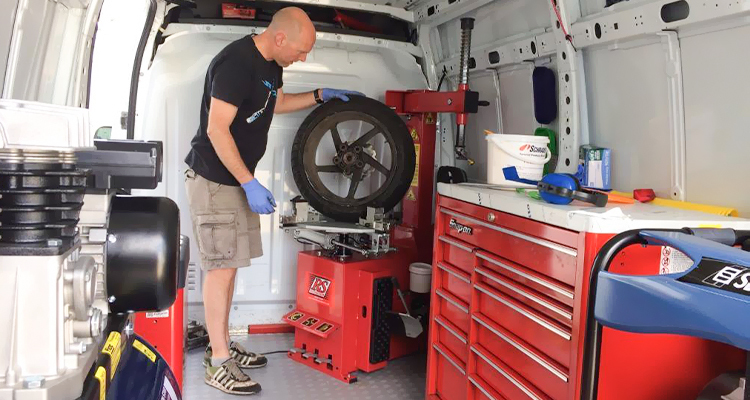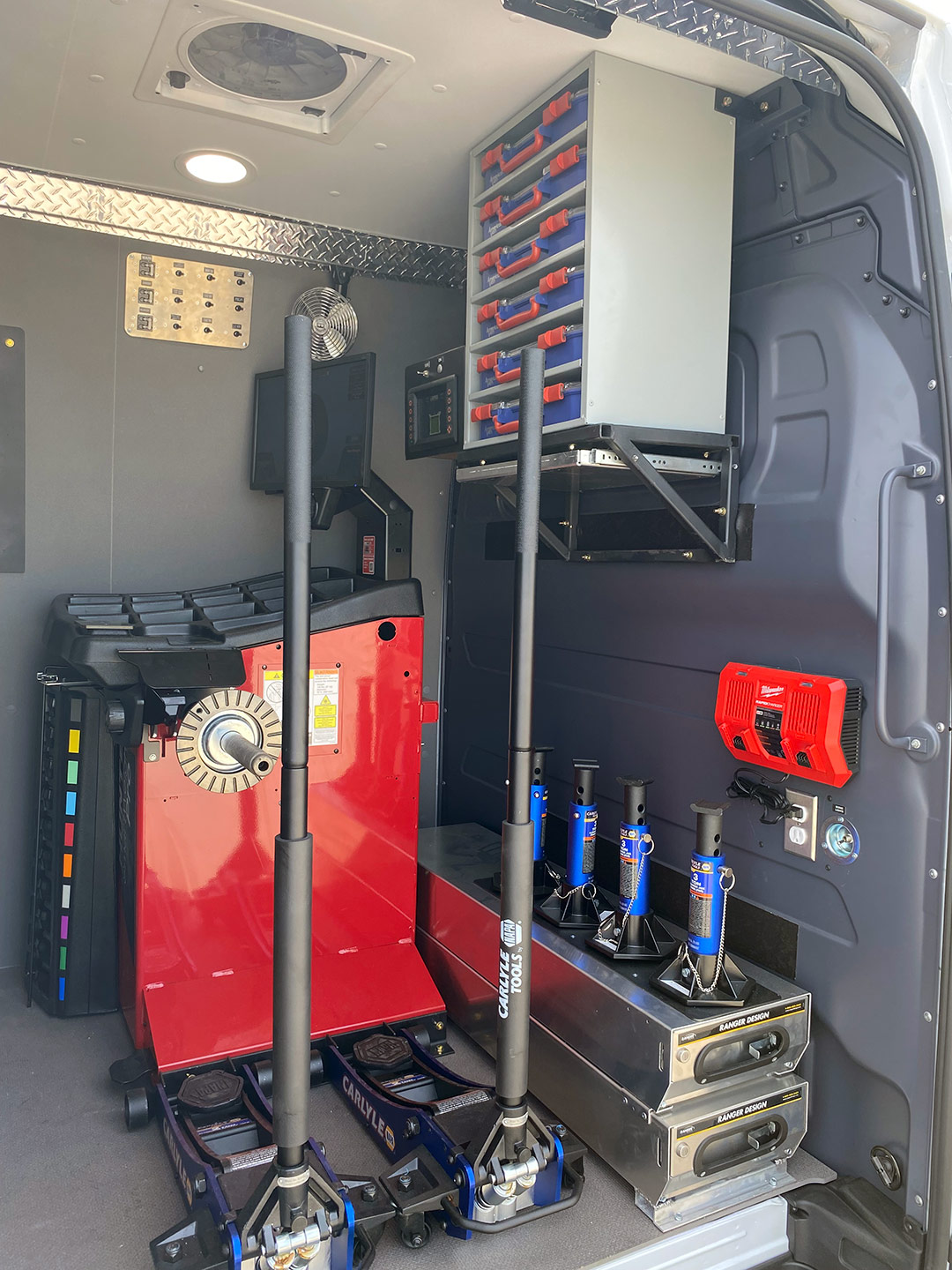Effective Flat Tire Repair Las Vegas - Mobile Support
Effective Flat Tire Repair Las Vegas - Mobile Support
Blog Article
Tire Service: Proven Approaches for Ideal Tire Upkeep and Care
Maintaining ideal tire problem is vital for both security and efficiency of any automobile. From guaranteeing correct tire pressure to normal rotation and positioning, there are tried and tested methods that can dramatically prolong the life-span of your tires and enhance general driving experience. As we explore the complexities of tire treatment and maintenance, we will reveal vital standards that every car proprietor need to follow for the very best possible results. Allow's dive into the globe of tire solution and discover the tricks to maintaining your tires in first-class shape for the long run.
Value of Tire Pressure
Correct tire pressure is a vital factor in ensuring optimal automobile performance and safety and security when driving. Maintaining the recommended tire stress levels supplied by the supplier uses many benefits. Ample tire stress promotes better gas effectiveness, as under-inflated tires can lead to enhanced rolling resistance, creating the engine to work tougher and take in more fuel. Secondly, correct tire stress makes certain also walk wear, boosting tire long life and saving cash over time by postponing the requirement for premature substitutes. Furthermore, properly blew up tires add to improved handling and stopping capabilities, crucial for secure driving in numerous roadway problems. Over-inflated tires, on the various other hand, can cause minimized traction and a harsher experience. Conversely, under-inflated tires are susceptible to overheating, which can bring about blowouts and mishaps. Frequently examining and changing tire stress, especially eventually trips, is an easy yet reliable way to boost vehicle efficiency, expand tire life expectancy, and focus on safety and security when traveling.
Tire Turning Standards
When thinking about tire turning guidelines, it is important to recognize the importance of this maintenance task in making the most of tire life-span and preserving optimal automobile efficiency. Tire turning includes transforming the position of each tire on a car to guarantee also tread wear. Front tires often tend to wear quicker than back tires because of guiding forces, making regular rotation critical for well balanced wear patterns. The advised turning pattern varies depending upon whether a car is front-wheel, rear-wheel, all-wheel, or four-wheel drive. Generally, tires should be turned every 5,000 to 7,500 miles, or as recommended in the vehicle manual. Neglecting tire turning can cause unequal wear, affecting handling, grip, and possibly compromising car safety. By sticking to appropriate turning standards, motorists can extend the life of their tires, boost gas efficiency, and boost general driving experience. Regular turning is a basic yet effective maintenance technique that contributes considerably to tire longevity and lorry efficiency.

Benefits of Wheel Positioning
Making certain proper wheel alignment after tire rotation is essential for preserving well balanced wear patterns and making best use of vehicle performance. Wheel placement describes the adjustment of the angles of the wheels to the maker's requirements. One of the vital advantages of wheel positioning is boosted guiding and handling reaction. When the wheels are properly lined up, it reduces steering initiative, making certain a smoother and more controlled driving experience. Furthermore, right wheel placement aids to prolong the lifespan of your tires. Misaligned wheels can trigger unequal tire wear, causing premature tire substitute and increased upkeep prices.

Tire Footstep Deepness Check
Doing a normal evaluation of tire walk deepness is important for preserving secure driving problems and prolonging the life expectancy of your tires. The step on site your tires plays a crucial function in supplying grip, especially in wet or slippery problems. To examine your tire tread depth, you can utilize a walk deepness gauge or the cent test. The recommended walk depth is at least 2/32 of an inch. It is time to change your tires to make sure ideal performance and safety and security on the roadway if the step deepness is listed below this threshold. Unequal walk wear can show problems with tire pressure, alignment, or suspension, highlighting the value of normal tread depth checks. Overlooking to keep an eye on and preserve proper tread depth can lead to decreased hold, longer braking ranges, and a raised threat of hydroplaning. By integrating tire tread depth checks into your regular upkeep schedule, you can drive with self-confidence understanding that your tires remain in leading condition.
Seasonal Tire Examination
A thorough evaluation of go to website tire condition customized to details climate problems is essential for preserving optimum performance and safety and security throughout the year. Seasonal tire examination is a basic facet of tire maintenance that guarantees tires prepare to encounter the obstacles positioned by various weather. To prepare for winter, it is important to examine the tire pressure on a regular basis as cool temperatures can trigger tire stress to drop. Evaluating tire tread deepness is additionally crucial to make sure appropriate traction on snow and ice-covered roadways. In addition, inspecting for indicators of damage, such as lumps or fractures, can help avoid possible tire failures. As the seasons modification, it is essential to evaluate tire problem and make any type of essential adjustments to assure risk-free driving. By conducting routine seasonal tire examinations, motorists can extend tire lifespan, enhance gas performance, and most significantly, ensure a safe driving experience in varying weather condition problems - Flat Tire Repair Las blog Vegas.
Final Thought
Finally, keeping appropriate tire stress, rotating tires regularly, lining up wheels correctly, monitoring tread depth, and performing seasonal examinations are vital techniques for optimal tire care. By complying with these verified approaches, motorists can guarantee their tires last much longer, do better, and add to overall automobile safety. It is very important to prioritize tire upkeep to prevent mishaps, improve fuel performance, and prolong the life-span of tires.
Sufficient tire stress promotes far better gas effectiveness, as under-inflated tires can lead to raised rolling resistance, triggering the engine to work tougher and consume more gas.When thinking about tire rotation guidelines, it is vital to understand the value of this upkeep job in maximizing tire life expectancy and keeping optimum vehicle performance. Seasonal tire assessment is a basic element of tire maintenance that guarantees tires are ready to deal with the obstacles posed by different weather condition conditions. By carrying out regular seasonal tire examinations, drivers can extend tire life-span, boost gas performance, and most importantly, ensure a protected driving experience in varying weather conditions.
In conclusion, maintaining proper tire pressure, rotating tires frequently, lining up wheels properly, checking step deepness, and carrying out seasonal assessments are necessary techniques for ideal tire care.
Report this page